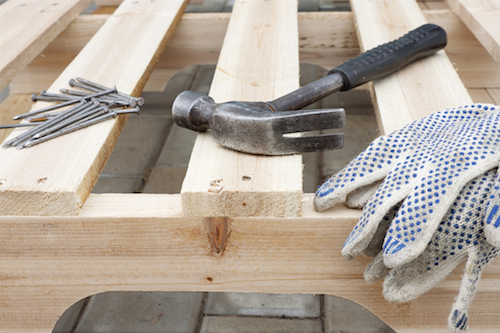On the surface, pallets appear simple: nail a few boards together, make sure they’re sturdy, and all’s well that holds well.
In reality, this is not quite true.
Pallet design is actually a very meticulous process. The spacing between boards, board footage, wood type, and grade are calculated specifically for each expected load and the expected lifespan of the pallet – whether it’s likely to be reused and repaired, or whether it’s expected to be shipped off and never seen again.
But some fundamental aspects are universal to pallet design and there’s surprisingly a lot to know about these often underestimated pillars of the shipping industry.
Pallet Basics
Deckboards are the part of a pallet that people see most often—the flat tops and bottoms that create the “deck” of the pallet. Stringers then “string together” the deckboards—they’re the panels that create the “walls” of the pallet.
On its own, a single pallet’s top deckboard will carry the most weight. If you’re stacking them three high to carry extra weight, the pressure point shifts two-thirds down the stack between the bottom of the middle pallet and the top of the lowermost pallet.
It’s critical for deckboards to be evenly weighted to avoid a lateral collapse. Deciding the distance between each wood panel and the number of panels in the deckboard depends on a number of factors, including the pallet’s intended use and how much weight it will carry.
Another variable is the length and type of fastener – the conjoining unit, often a nail or screw. Many pallet customers assume longer nails are always better, but this is not the case – the fastener must fit the depth and quality of wood. As a rule of thumb, ring shanks work better with softwoods like pine, while helical fasteners drive into hardwood better because they are less likely to crack the wood.
When determining the quality of nail, the standard test is the MIBANT—the Morgan Impact Bend Angle Nail Tester—to see whether and how the nail or staple bends.
The Trees of Pallet Life
Pallet deckboard design also hinges on the choice of tree species. Hardwood pallets typically use dense species like red or white oak, which can hold heavy weight and are extremely durable.
But many consumers prefer softer woods like poplar, because poplar doesn’t stain when it gets wet like hardwood does. Hardwood pallets contain tannins—when tannins get wet, they can leak out and stain the product.
Because it’s a soft wood, the greatest disadvantage to poplar is that it requires more board footage to achieve the same strength and durability as hardwood.
There’s never a right or wrong answer when it comes to pallet design, but understanding the structure can help you make more informed decisions that can reduce the hassle and diminish costs.
